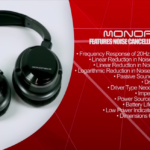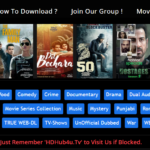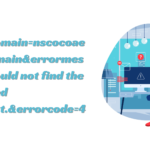The Best Time Tracker Features to Look for in 2024
- 1 Why Time Trackers Are Important
- 2 Time Tracker Features
- 2.1 Automated Time Tracking
- 2.1.1 Why It’s Essential:
- 2.2 Advanced Monitoring and Reporting
- 2.2.1 Why It’s Essential:
- 2.3 Third-Party Integrations
- 2.3.1 Why It’s Essential:
- 2.4 Cross-Platform Compatibility
- 2.4.1 Why It’s Essential:
- 2.5 Screenshot Tracking
- 2.5.1 Why It’s Essential:
- 2.6 Scalability
- 2.6.1 Why It’s Essential:
- 2.7 Flexible Pricing Plans
- 2.7.1 Why It’s Essential:
- 2.8 How to Choose the Right Time Tracker for Your Business
- 3 Closing Thoughts
Time trackers play a vital role in ensuring productivity within teams worldwide. What started as simple time management tools have evolved into robust productivity suites, offering many features beyond tracking time. In 2024, the demand for feature-rich time trackers will grow as businesses strive for higher efficiency, transparency, and performance monitoring.
This article will explore the top time tracker features businesses should look for in 2024. Additionally, we’ll explore how companies can identify other essential functionalities based on their specific needs. From automated tracking to advanced integrations, let’s examine the must-have capabilities for modern teams.
Why Time Trackers Are Important
Before diving into the features, it’s essential to understand why time trackers have become a necessity for businesses:
- Improved Productivity: By monitoring time spent, teams can identify areas where improvements are needed, whether that involves task prioritization or eliminating distractions.
- Transparency and Accountability: Time trackers record how employees allocate their working hours, promoting a culture of accountability.
- Accurate Billing and Payroll: Especially for businesses that operate on a per-hour billing basis or have freelance teams, time trackers ensure that clients are billed correctly and employees are paid for their work time.
- Better Project Management: Time-tracking data offers insights into how long specific tasks take, enabling better forecasting and project planning.
Time Tracker Features

With this understanding, let’s now dive into the specific features you should prioritize when choosing a time tracker in 2024.
Automated Time Tracking
Automation is becoming a cornerstone in modern productivity tools, and time tracking is no exception. Automated time tracking reduces the likelihood of human error and ensures that every second is accounted for. For instance, tools like WebWork can begin tracking time automatically when a device boots up. This is particularly useful for work devices dedicated solely to professional tasks.
Other tools might offer options like automatic tracking based on app usage or idle time detection, reminding users to log time only when actively working. This automation streamlines the process and eliminates the need for manual inputs.
Why It’s Essential:
- Reduces Human Error: You must not remember to start or stop the timer.
- Increases Accuracy: No lost hours or minutes due to forgetfulness.
- Saves Time: Automating repetitive tasks means less effort for the user and more focus on the actual work.
Advanced Monitoring and Reporting
Many businesses now use time trackers for their broader employee monitoring solutions. Time tracking data provides valuable insights into how teams perform, which tasks take up the most time, and where inefficiencies lie.
The best time-tracking tools in 2024 offer comprehensive monitoring features such as:
- Activity tracking: Monitor mouse movements, keystrokes, and app usage.
- Idle time tracking: Detect periods of inactivity and flag them for review.
- Task tracking: Assign specific tasks to tracked time for detailed project analysis.
Alongside these monitoring features, robust reporting tools allow team leads to dive deep into the data. With customizable reports, businesses can analyze productivity trends over time, identify bottlenecks, and optimize workflows accordingly.
Why It’s Essential:
- Enhanced Insight: Monitoring allows for a deeper understanding of team performance.
- Data-driven Decisions: Reports help managers make informed decisions to optimize efficiency.
- Transparency: Regular reporting fosters trust and openness within teams.
Third-Party Integrations
In 2024, businesses rarely rely on a single tool for all their productivity needs. Time trackers need to integrate seamlessly with other software tools like project management platforms (e.g., Trello, Asana), communication tools (e.g., Slack, Microsoft Teams), and payroll systems (e.g., QuickBooks).
Integrations ensure that data flows smoothly between apps without manual inputs, minimizing the risk of errors. For instance, a time tracker that integrates with a project management tool can automatically sync task lists, track time for each task, and provide reports for billing purposes.
Why It’s Essential:
- Streamlined Workflows: Seamless integration with other apps reduces the need for manual data entry.
- Improved Accuracy: Automatically syncing data between tools decreases the chance of mistakes.
- Increased Productivity: With everything connected, teams can focus on work rather than managing software tools.
Cross-Platform Compatibility
Work doesn’t always happen on a desktop computer in today’s mobile-first world. As remote and hybrid work models grow, time-tracking tools must be available across various platforms, including desktop (Windows, macOS, Linux) and mobile devices (iOS, Android).
Cross-platform compatibility ensures that team members can track time efficiently wherever they work. Some tools even offer browser extensions or cloud-based apps, allowing users to track time directly from a browser window.
Why It’s Essential:
- Flexibility: Teams can track time on the go from any device.
- Seamless Experience: No need to worry about whether the tool will work on different operating systems.
- Increased Usability: Greater accessibility means more users will likely use the tool consistently.
Screenshot Tracking
Having lots of productivity monitoring functionality is always important in a time tracker. But, having a way to verify this data can be just as vital. One of the best ways of doing so is with periodic screenshots. An innovative time tracking tool with screenshot features can help you verify your team’s data in the long run. This will then help you boost productivity and speed up your company’s growth. Screenshot tracking is also perfect for identifying and preventing distractions.
While it might seem intrusive at first glance, it can be invaluable in verifying that work is progressing as expected. Some tools offer features to blur sensitive data within screenshots, ensuring privacy while maintaining oversight.
Why It’s Essential:
- Increased Accountability: Ensures that time is being spent on work-related tasks.
- Verification: Screenshots provide tangible evidence of progress and productivity.
- Improved Trust: Helps remote teams feel more connected and accountable.
Scalability
As businesses grow, their time-tracking needs will evolve. A small startup may only need essential features, but additional functionalities such as project management, advanced reporting, and comprehensive integrations become crucial as it scales.
High-quality time trackers are designed to grow alongside businesses, offering scalability through modular features and customizable pricing plans. Whether a company has five employees or five hundred, the right time-tracking software should handle the workload seamlessly.
Why It’s Essential:
- Future-Proof: A scalable solution ensures you won’t outgrow your time-tracking tool as your business expands.
- Cost-Effective: You only pay for the features you need at your current growth stage.
Flexible Pricing Plans
Not every company has the budget for an enterprise-level time-tracking solution. Flexible pricing plans ensure that even small businesses can access the needed features without breaking the bank. Look for time trackers with multiple plans, each with a different set of features, so that you can choose the best fit for your team.
Additionally, many tools offer free trials or even freemium models, allowing businesses to test the software before committing financially.
Why It’s Essential:
- Affordability: Flexible pricing ensures that even small businesses can find a suitable solution.
- Customizable Features: Different plans mean you can pay for only what you need.
How to Choose the Right Time Tracker for Your Business
Every business has different needs, so choosing the right time tracker isn’t a one-size-fits-all approach. Here are a few additional considerations to keep in mind:
- Identify Core Features: Focus on the features your business will use daily. For example, screenshot tracking and activity monitoring may be critical if you have a remote team.
- Trial Periods: Many time tracking tools offer free trials, a great way to test features and compatibility before making a financial commitment.
- User Experience: Ensure the time tracker is user-friendly and integrates smoothly with your existing tools. A clunky interface can hinder adoption.
- Security: Security should be a top priority, especially when dealing with sensitive company data. Look for tools that offer encryption and compliance with data protection laws.
Closing Thoughts
The best time trackers in 2024 go beyond basic tracking and provide a full suite of productivity features designed to help businesses improve efficiency and accountability. When selecting a time tracker, focus on crucial functionality like automation, monitoring, integrations, and scalability to ensure your business’s long-term success. As technology evolves, having the right tool in place can make all the difference in keeping your team productive and aligned with company goals.

















